All products featured are independently chosen by us. However, SoundGuys may receive a commission on orders placed through its retail links. See our ethics statement.
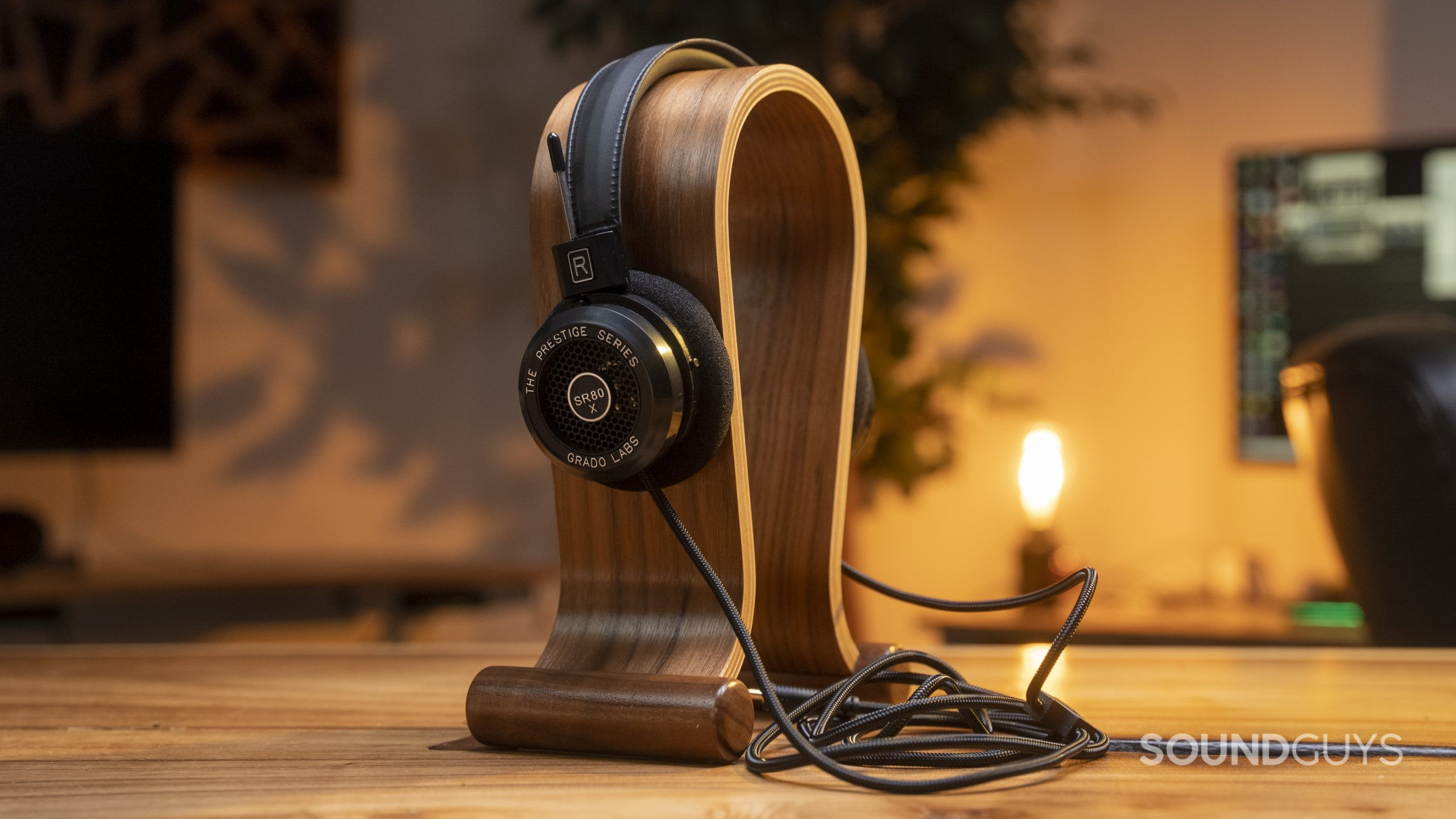
Grado Labs SR80x review
May 27, 2022
Grado SR80x
In a world of globalization and outsourced labor, it’s pretty shocking to consider that right now in Brooklyn, NY, people are hand-building headphones. These headphones don’t cost as much as your rent either. Grado Labs has quietly produced relatively affordable headphones in New York since 1953. So we decided to test out the Grado SR80x from the company’s updated Prestige Series. Neither the cheapest nor the priciest of the line, we spent about a week to see how the SR80x might fit into your headphone collection.
- People who have a quiet place to listen to their music can fully enjoy these open-back cans.
- Fans of on-ear headphones will like the size and comfort of the SR80x.
What’s it like to use the Grado SR80x?
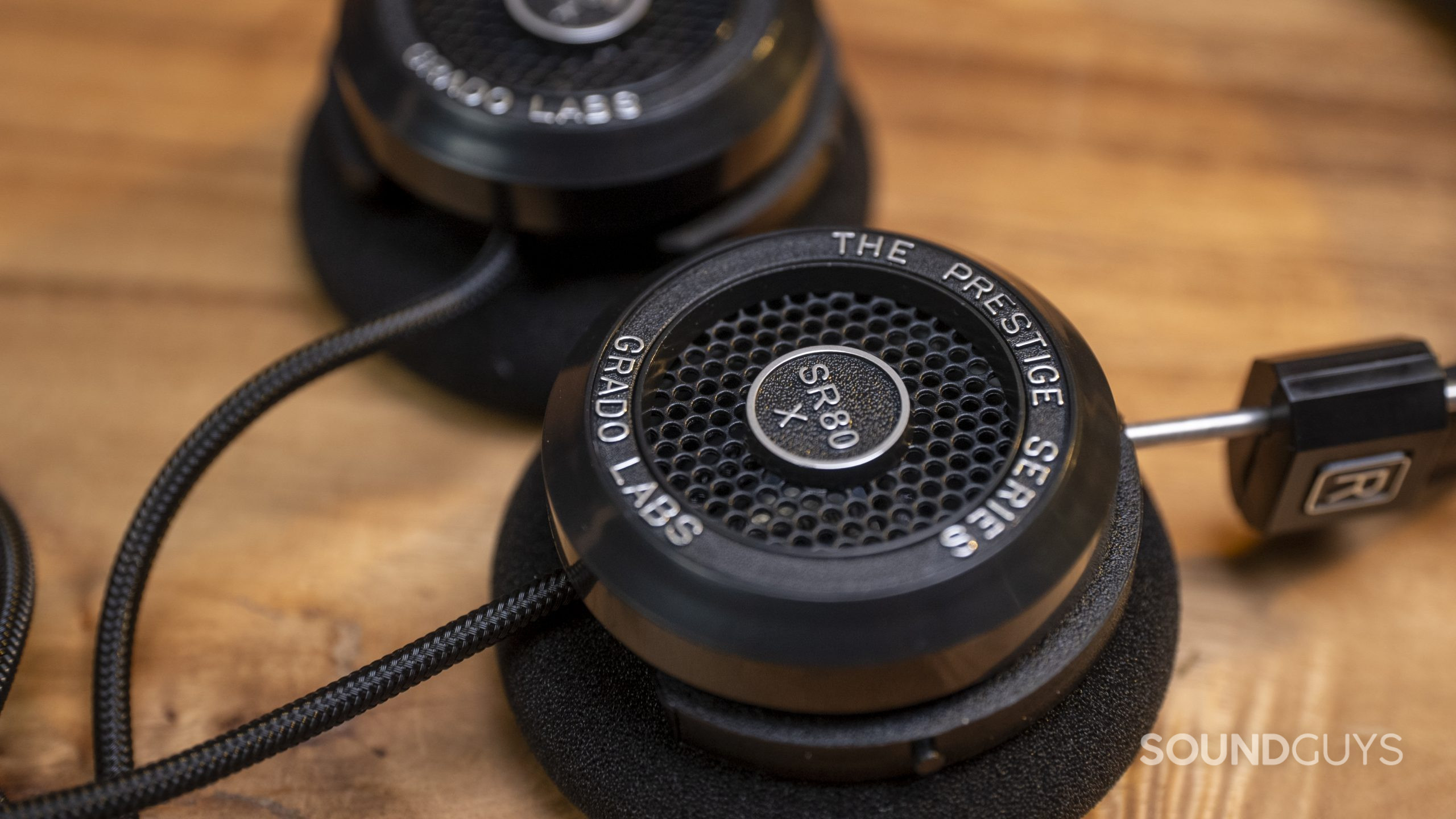
The Grado SR80x comes in a sparse cardboard box, shipping with just a 1/4-inch adapter for the 3.5mm headphone jack. You don’t get a carrying case or extras. To say that the Grado SR80x looks a touch dated ignores that Grado Labs sort of invented this look, however, the aesthetic is functional too. The overall size is small compared to modern over-ear headphones, but larger than a lot of modern on-ear headphones. It’s one of the sole sets of on-ear headphones that I can wear for about three hours without discomfort, as it has just the right amount of clamping force and weighs a reasonable 240g. Because the SR80x is an on-ear fit, you don’t have much risk of overheating either.
The ear cups can swivel all the way around—more than an owl can turn its head, though you will start twisting the cable at some point. On a horizontal plane, the ear cups tilt slightly to evenly distribute force against your ears. Two antennae-like friction headband adjusters stick out the top of the sides to make micro changes to your fit. There are no folding hinges to compact the headset. It’s not thoroughly modern in appearance, but it works very well.
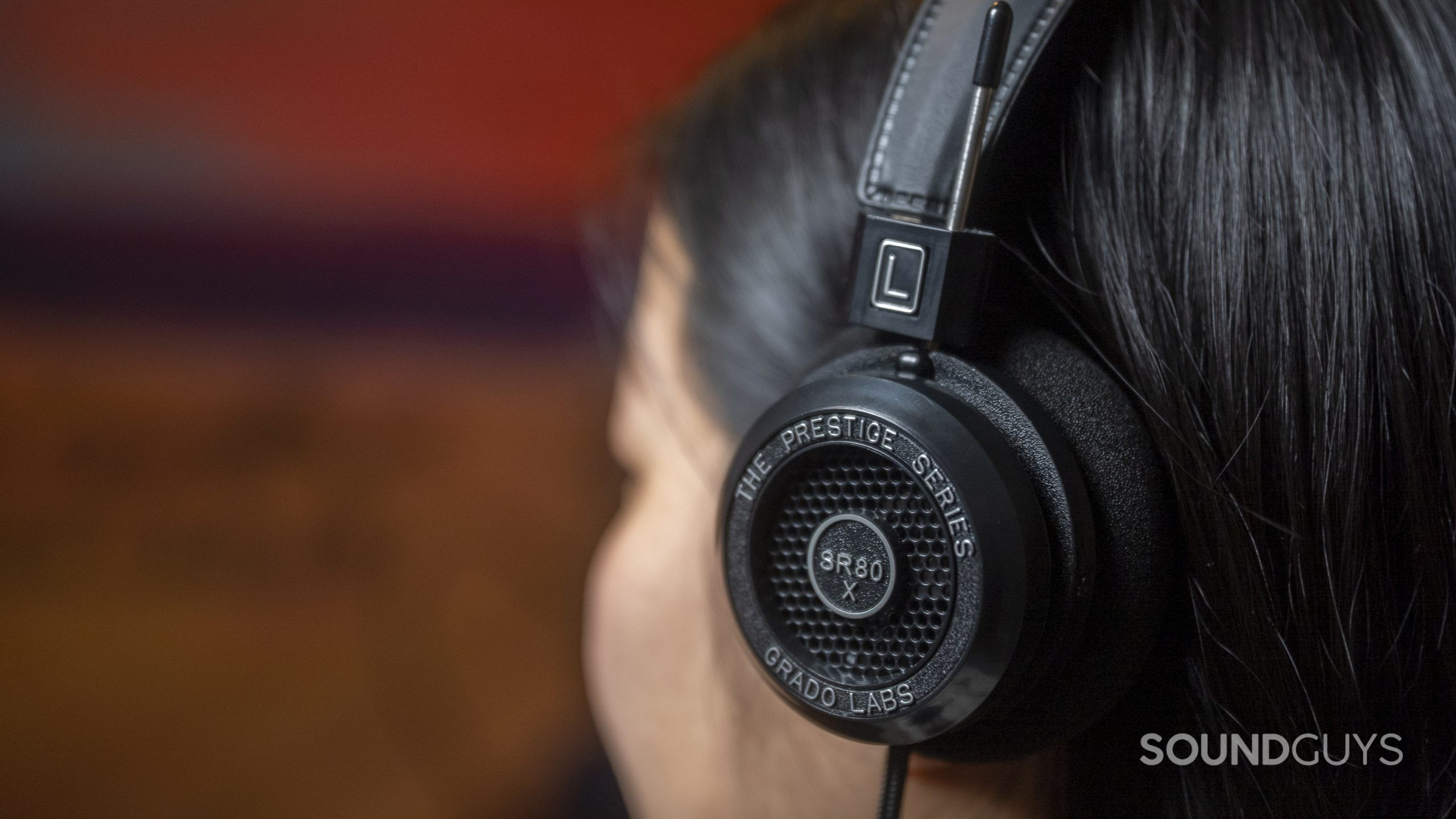
The fit and finish feel slightly unrefined, down to the reflective silver branding on the housing which is not uniformly colored. You can feel slightly rough edges and seams on the housing, though it seems easy to disassemble and reassemble if needed. Also, the headband comprises of lightly padded vinyl and doesn’t require more due to the headset’s good weight distribution.
As a set of open-back headphones, you’ll only want to listen to the SR80x in a quiet place. It’s definitely not an office-appropriate headset, because your neighboring coworkers will hear everything, and in turn, you will still hear them. You don the SR80x at your desk at home, plugged into your computer, or whichever device you use to listen on.
You can’t remove the cable if it busts, which is a shame. Grado Labs can perform repairs, but that’s an additional cost after one year. Prior to that one-year mark, you have to pay to ship to Grado and the company pays to ship it back.
The good news is that Grado can perform the repairs in-house. Depending on which country you reside in, that could cost quite a bit in shipping but if you’re in the United States, that’s pretty convenient. Like most headphones intended for home or studio use, there’s no IP rating. That’s normal. One of the upsides of a wired headset like the SR80x is that most repairs are fairly easy to do yourself, or to find somebody locally with skills.
How do you connect the Grado SR80x?
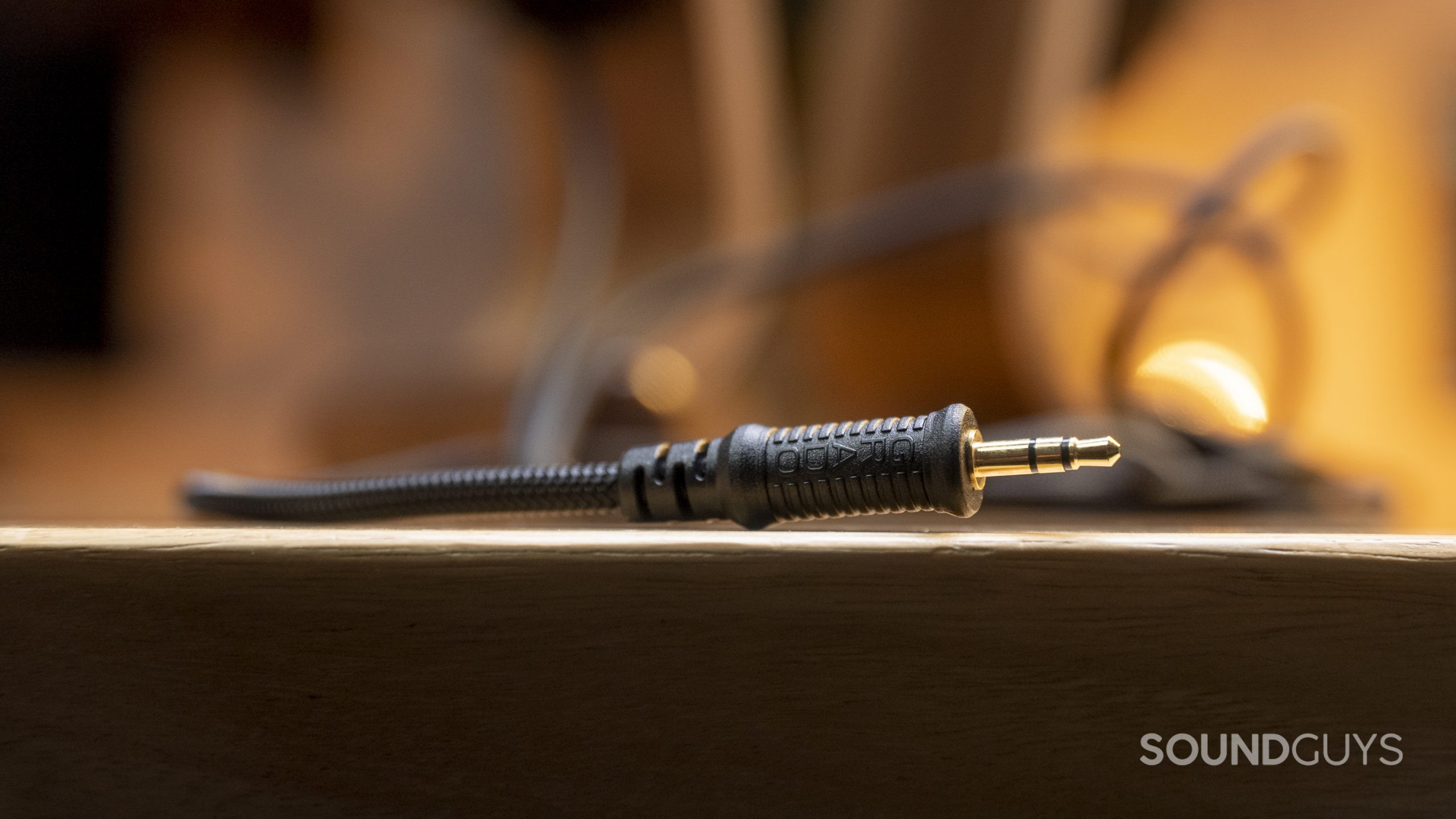
You simply plug the headphone jack into the headphone output of whatever device you have. Given the high chance that your phone does not have a headphone jack, you’ll need either a USB-C to 3.5mm dongle, or an Apple Lightning to 3.5mm dongle. The Grado Labs SR80x also includes a 1/4-inch adapter too.
No, Grado Labs the upgraded Prestige lineup does not require an amp. Its impedance is 38Ω with a 99.8dB/mW sensitivity.
How well does the Grado SR80x block out noise?
Nobody expects the SR80x to block much noise, and it doesn’t. The passive isolation of the Grado SR80x is not good. In fairness, and by virtue of their unoccluded design, open-back headphones can’t isolate well. So not only will you hear your environment, but anybody nearby will hear your audio too. That’s no problem in a private space, but of course, if you purchase the SR80x, you’re probably going to need a different pair of headphones when for less friendly environments
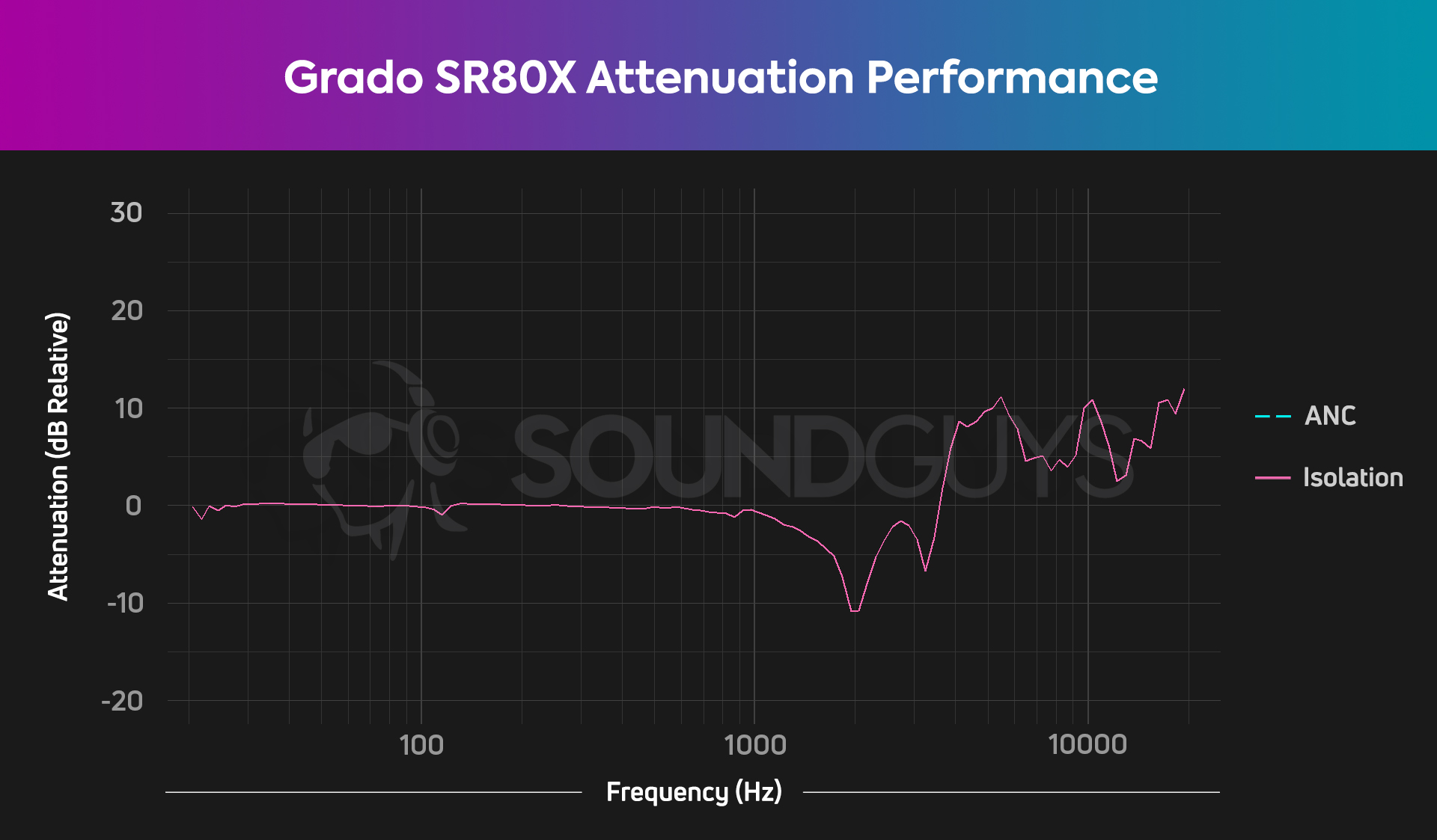
Like the Grado SR60X, this is another example of a headset that passively amplifies noise from the surroundings. You can see this on the isolation chart where the pink line drops below the x-axis into negative attenuation (otherwise known as gain). We believe this is the result of the acoustic design of the headphones, which creates a pronounced resonance at 2kHz—the fact that ambient noise at this frequency is also boosted suggests this is achieved with an acoustic resonator.
In quiet environments, this poses no issues. In noisier circumstances, rather than isolate, it actually boosts at and around the 2kHz and 4kHz frequencies. These are narrow bands, and it’s unlikely that you’ll even notice, but it just illustrates how the SR80x not only barely isolates: it can amplify environmental noise.
How does the Grado SR80x sound?
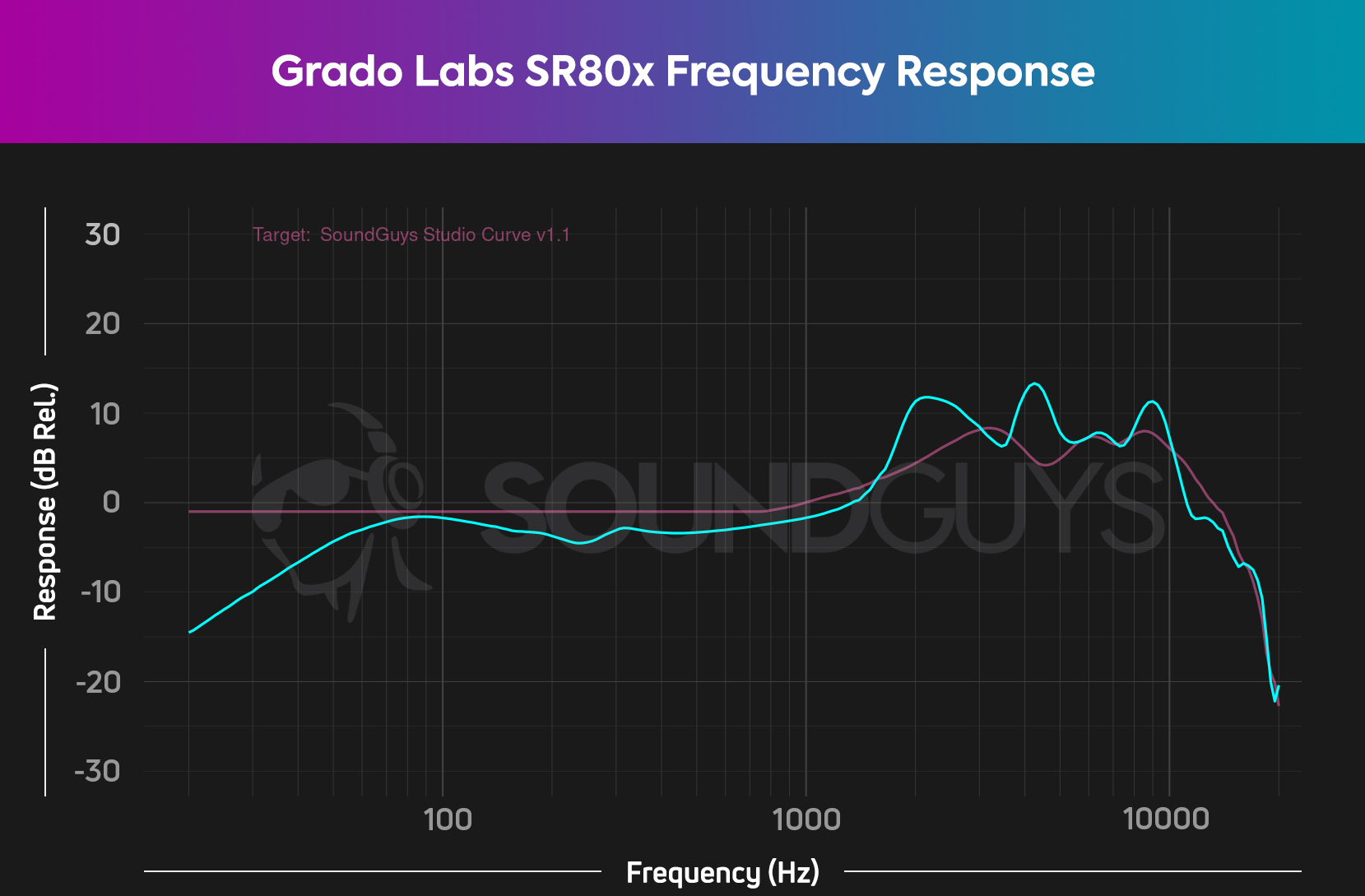
Grado Labs manages to fit 44mm dynamic drivers inside these on-ears. The headset’s frequency response strongly favors treble, with a pronounced high-frequency emphasis. Testing on our B&K 5128 reveals a pronounced 7dB exaggeration at 2kHz, and a 3-7dB spiky over-emphasis from 4-10kHz relative to our house curve. From around 100-1500Hz, the SR80x roughly follows our guiding frequency response, but about 3dB too quietly. Unsurprisingly for an open-back design, sub-bass is lacking, although, it sounds less dramatic than it looks because not much happens there in most styles of music.
What this means for listeners is a mostly pleasant listening experience: you may also enjoy the prominent cymbals, high register voices, and notice new details in that range. At the same time, it can fatigue ears prematurely.
High, mids, lows
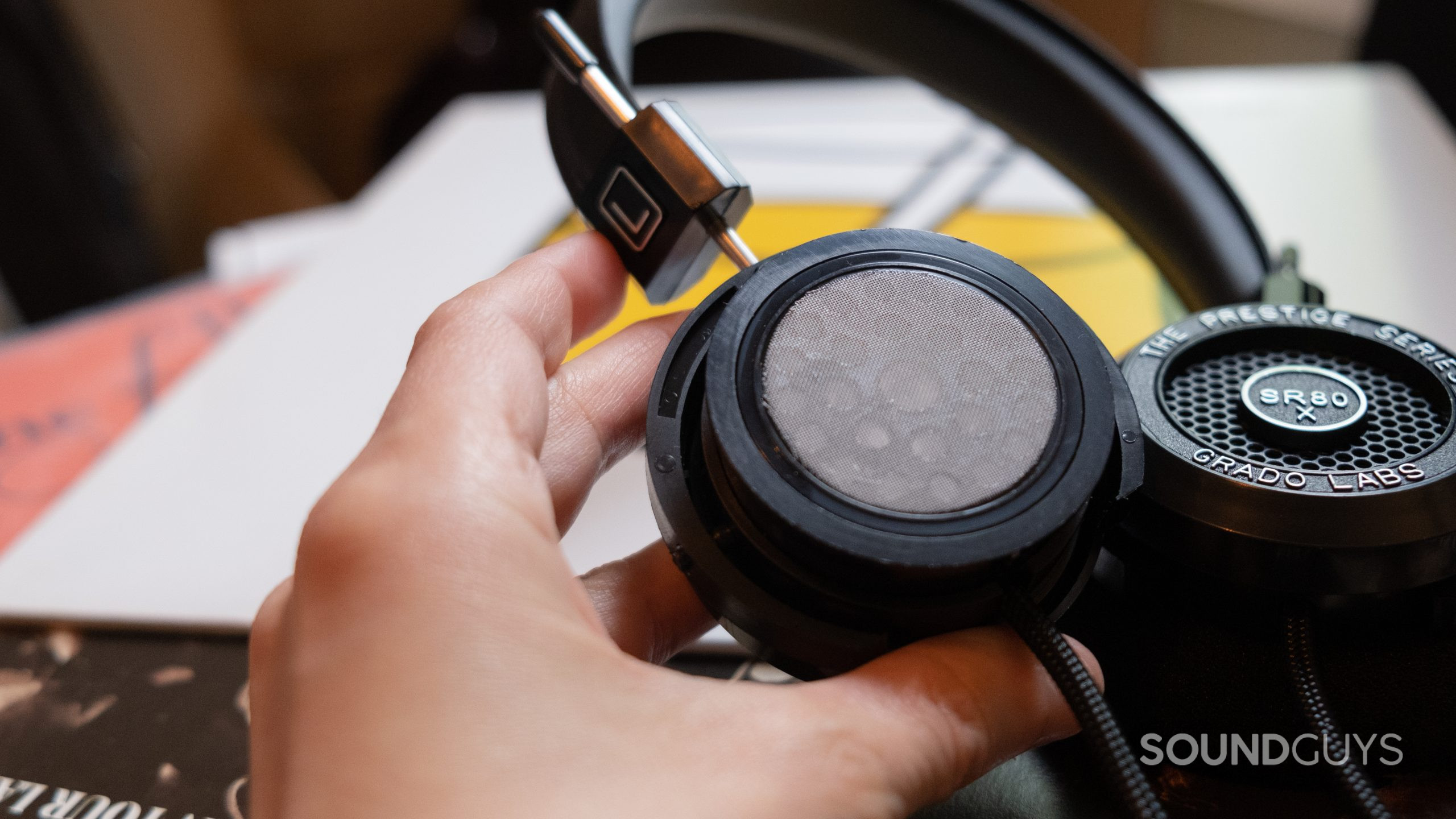
Listening to Unnecessary Drama by Belle and Sebastian I have no trouble hearing all the musical parts of the track. The driving bass guitar is still very present, despite how the SR80x under-represents sub-bass, where it tapers off dramatically.
What stands out is the exaggeration in treble frequencies, exemplified in hi-hats and the high-pitched harmonica in the song. These sounds land squarely in those areas of over-emphasis in the chart. The rhythm guitar sounds too quiet as well, when competing with the trebly harmonica and cymbals. At the bridge beginning 2:04, the cymbals are simply just too loud compared to Stuart Murdoch’s tenor vocals.
Sure, the highs are too loud but the mids and bass are at good volumes relative to each other (and our target curve), since it has a somewhat studio-style sound from the mids to bass. Anyone who listens to a lot of podcasts or vocal-heavy music should enjoy the SR80x, so long as you don’t crave thumping bass.
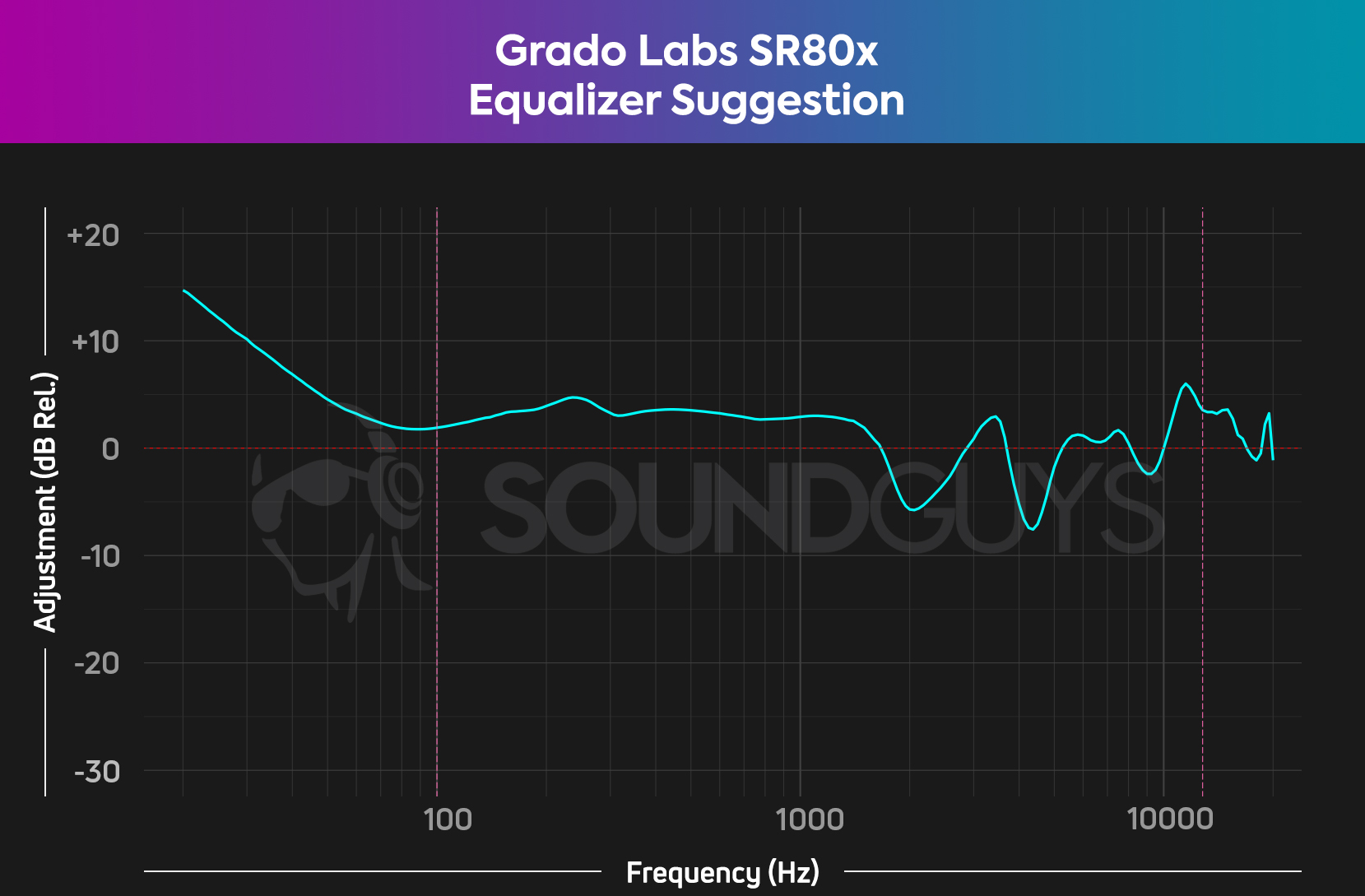
If you have an equalizer on your phone, computer, or in your stereo rack, you can equalize this pretty easily by turning down most frequencies between 2-10kHz by about 7dB, except for around 3.5kHz. You’ll also want to try turning up the sub-bass. Take a look at our suggestion to adjust the EQ and fine-tune it.
Should you buy the Grado SR80x?
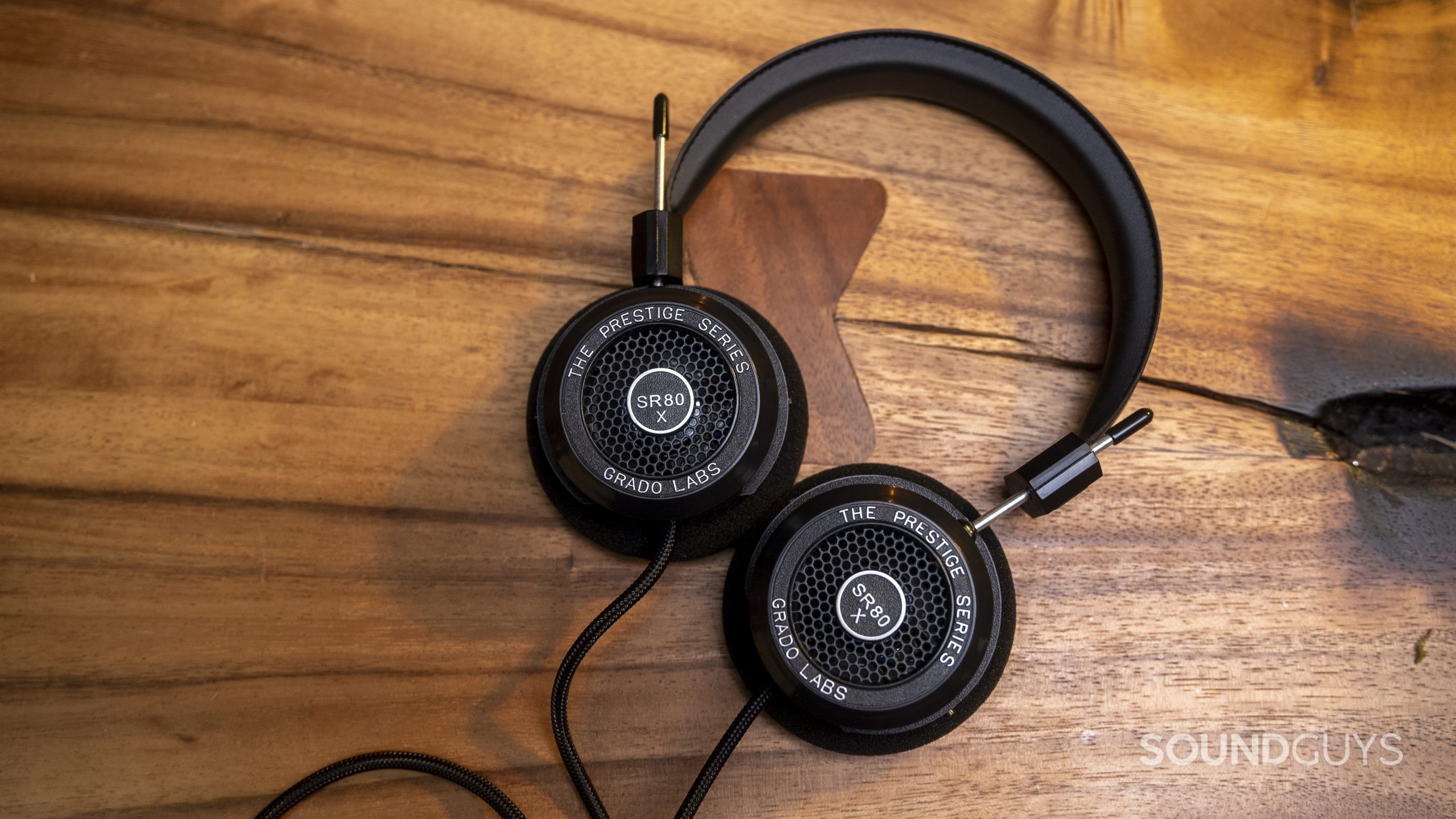
With the Grado Labs SR80x, you get an unusual frequency response tailored to a specific taste, not suitable for everyone. Most listeners don’t love this much treble, though occasionally some media works with it very well. On-ears are also not so popular these days because they don’t fit all ears especially well. However, the SR80x is one of the more comfortable on-ear designs around, so if you’re set on that style of headphone, it might be a good choice.
To round out the characteristic niche Grado Labs fills with the SR80x, these headphones have open-backs. This design limits where you can listen without igniting the ire of your coworkers or the commuting public. For the person with a generous collection of headphones, a pair of Grado Labs seems like a must but, it shouldn’t be your sole set.
What’s the difference between the Grado SR60x and SR80x?
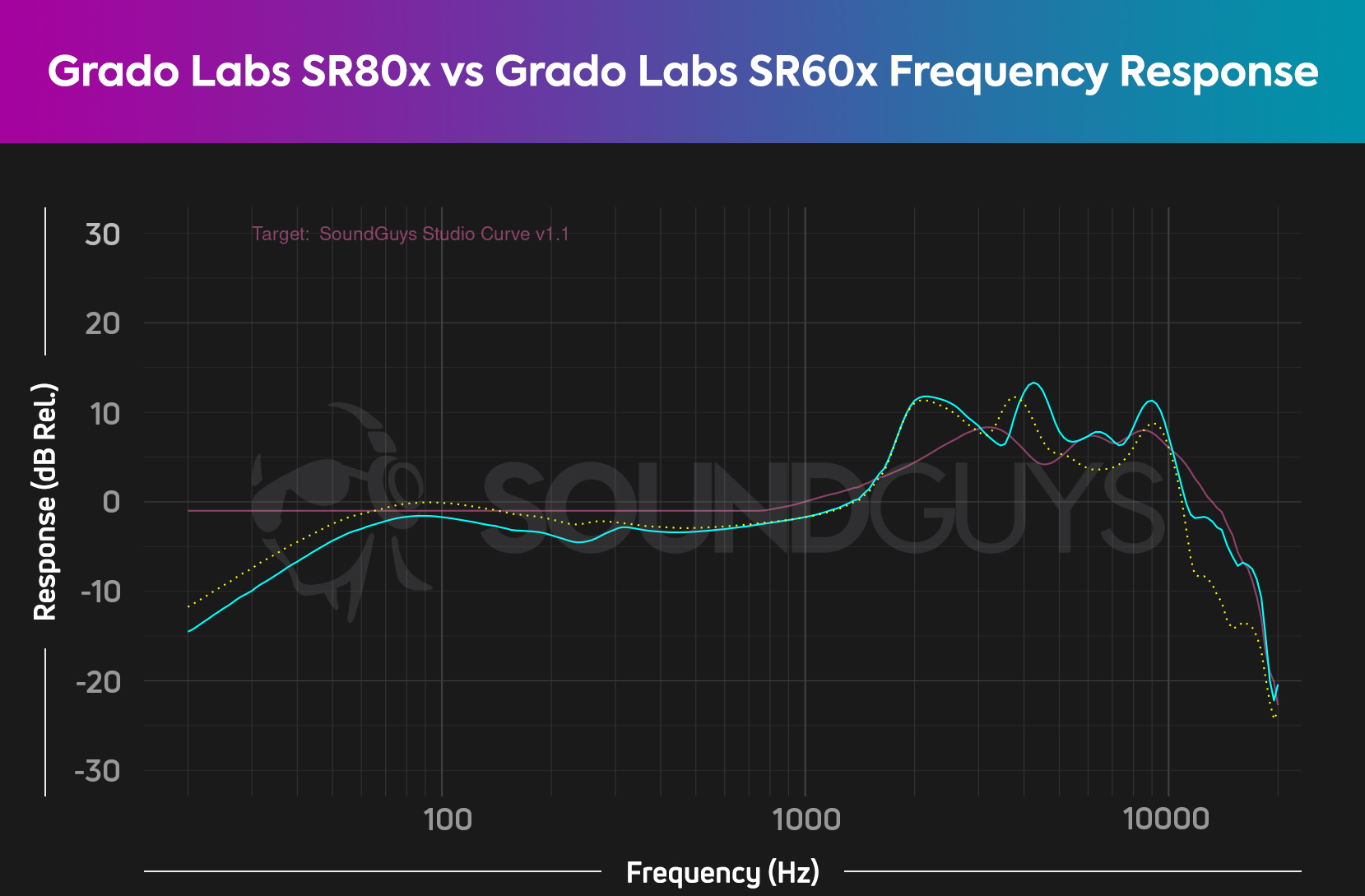
The build quality is pretty much the same between the Grado Labs SR60x and SR80x, as are the looks. The main differences are in the frequency response. The SR60x maintains a treble-focused sound, with similarly matched mids. Like the SR80x, the SR60x rolls off the bass, but it gets closer to our studio ideal there. The SR60x under-emphasizes above 10kHz more than the SR80x.
Unless you really like treble exaggeration, the SR60x will sound better to most listeners than the SR80x. That’s good news: it’s also cheaper than the SR80x.
What should you get instead of the Grado SR80x?
If you want the Grado Labs sound, grab the cheaper Grado SR60x. It more closely follows our target curve, and otherwise works and looks basically the same as the SR80x. Of course, that means you get some of the same quirks as well.
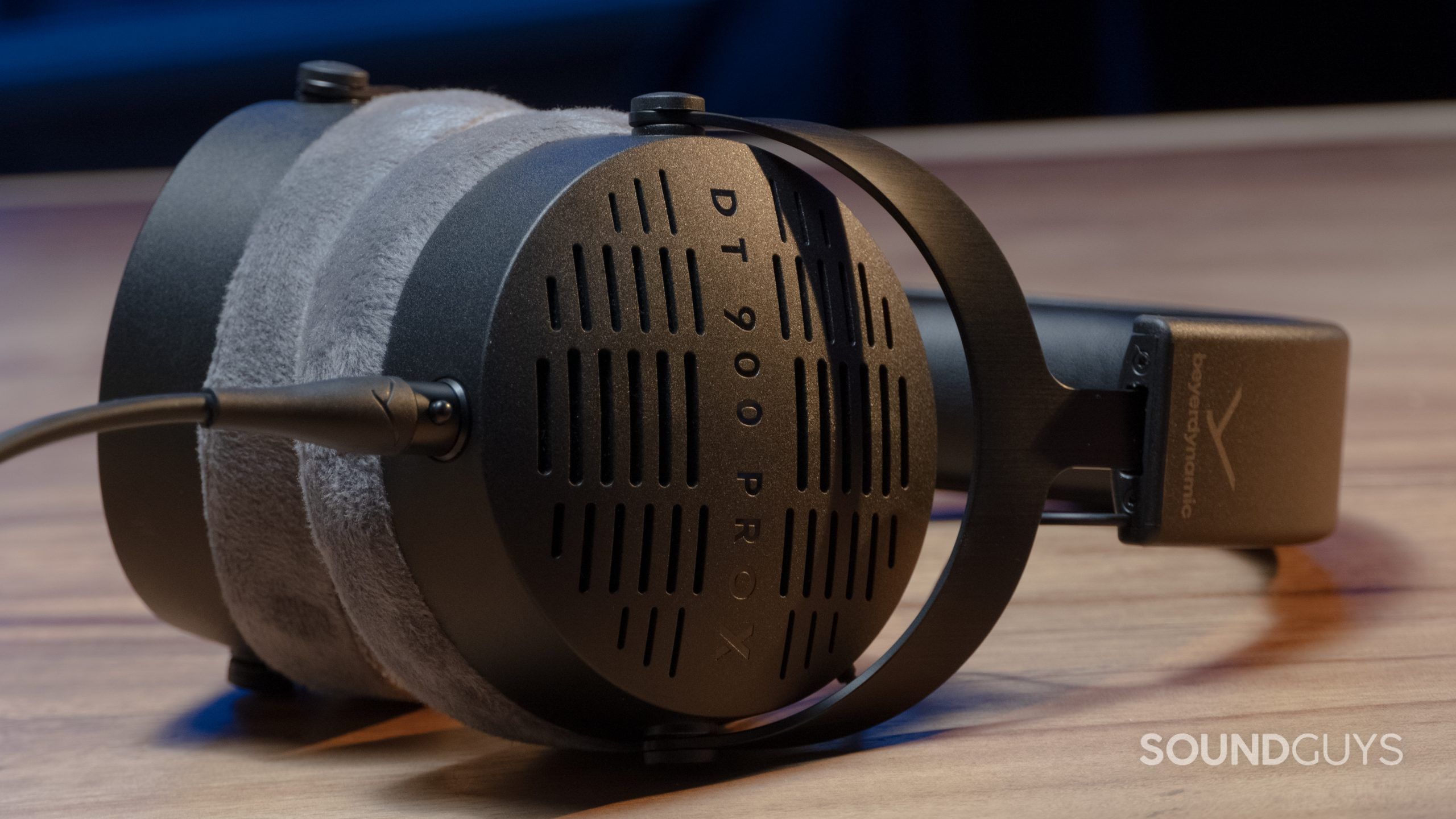
Listeners who don’t mind spending a bit more should pick up the Beyerdynamic DT 900 PRO X for a truly nice-sounding and cozy pair of open-back headphones. The DT 900 PRO X comes with a more accurate bass representation than the Grado Labs SR80x.
Those who want something that’s easy to repair with removable cables and a studio sound will like the Drop x Sennheiser HD 6XX. It tames the highs almost exactly to our target curve. Below 100Hz the bass tapers off, like a less trebly SR80x in sound. It’s a bit plasticky in build, but with decent fit and finish, including replaceable cables and ear pads.
What are good closed-back headphone alternatives?
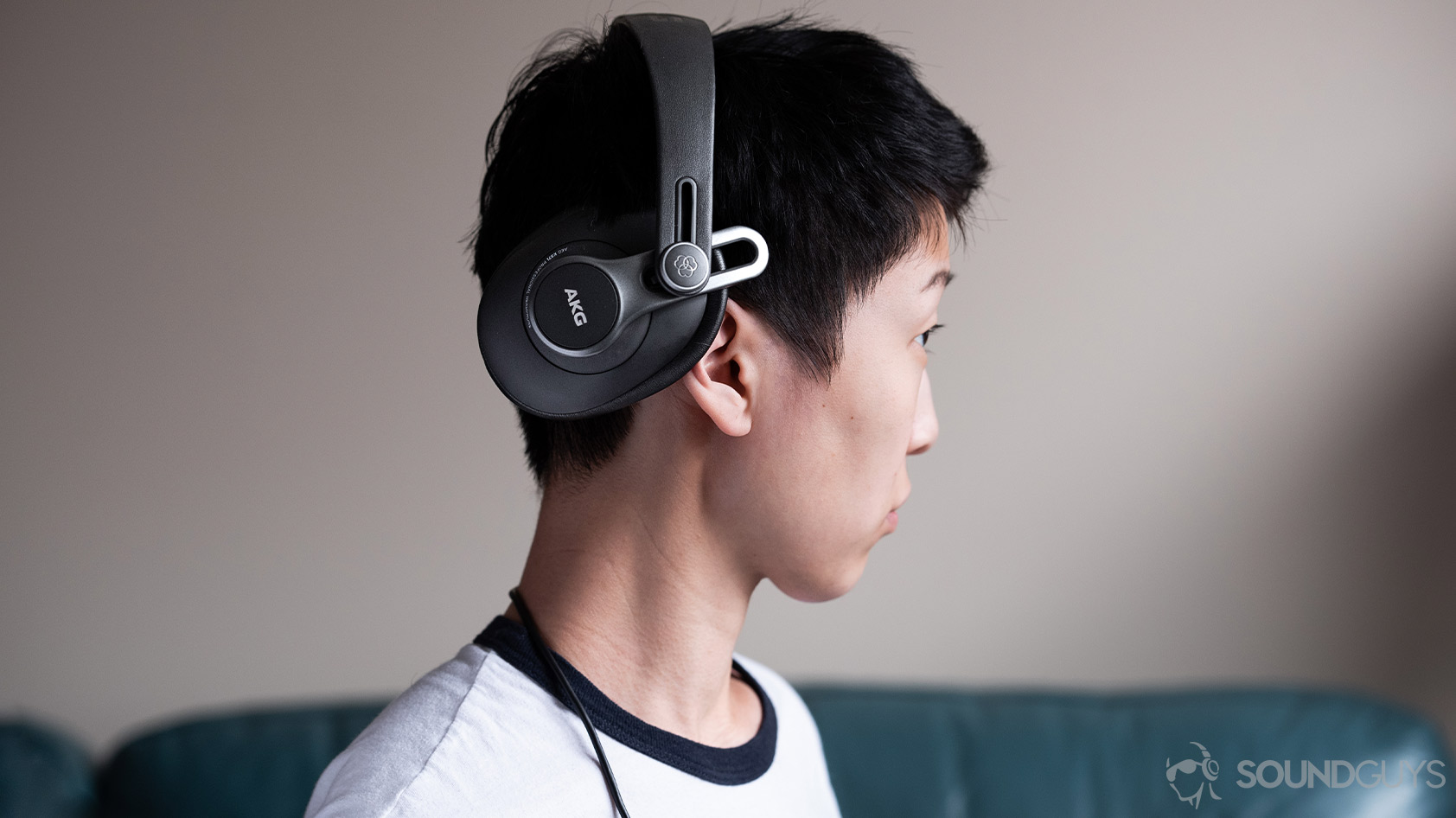
The AKG K371 is a quality set of closed-back headphones that you ought to check out. Unlike the Grado Labs Prestige line, the K371 fits over your ears. Even so, it’s relatively compact and weighs 255g. It sounds excellent and costs in the same ballpark as the SR80x, representing a solid value.
With a more consumer-oriented sound, the Thinksound ov21 maintains the extra treble emphasis, like the SR80x, but with more bass on tap too. Its closed-back design isolates better, and the cable is replaceable. It gets bonus points for some eco-friendly considerations including the materials.
Frequently asked questions about the Grado SR80x
No, Grado states on its packaging that the SR80x will benefit from a break-in period. Because we know burn-in is a myth, I can only determine that the improved performance with use refers to the headset stretching and molding over time to fit your anatomy better leading to better performance through fit.
The SR80e represents the old model from the Prestige series. Unless you find a killer deal, you might as well pick up the newer model.
Technically, you can mix with basically any headphones so long as you have a very full understanding of the flaws or areas of emphasis or under-emphasis in the frequency response, but it makes it harder to mix well. In a pinch, I’ve mixed using the older Grado Prestige headphones, so it can be done, however, consider some purpose-built headphones too.
